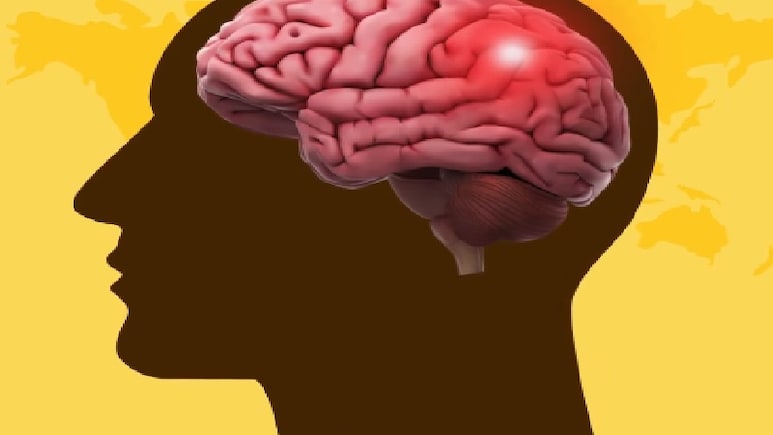
Every year on October 29 the world marks World Stroke Day, an awareness push led by the World Stroke Organization to remind everyone: stroke is common, fast, often treatable and surprisingly preventable. The World Stroke Campaign uses the day as a springboard for year-round messages about spotting symptoms quickly and reducing risk across communities. This isn't just an “old people's” problem anymore, the campaign's 2025 materials again stress rapid action and prevention. Read on as we discuss what a stroke is, why they are increasing in number in youngsters and how you can reduce your risk.
What is a stroke?
A stroke is essentially a “brain attack.” Either blood suddenly stops reaching part of the brain (an ischemic stroke) or a blood vessel in the brain bursts (a hemorrhagic stroke) and brain cells begin to die in minutes. That's why the mantra is: time lost is brain lost. Recognising sudden face droop, arm weakness or slurred speech and rushing to hospital can mean the difference between full recovery and permanent disability.
Why are more young adults having strokes?
Recent regional evidence shows a worrying trend: while stroke remains more common with age, the proportion of strokes occurring in younger adults (often defined as <50 or 15–39 years in studies) is rising in South and Southeast Asia. Indian hospital and registry data highlight that traditional risk factors like hypertension, diabetes, smoking, dyslipidaemia and alcohol are frequently found in younger stroke patients. In some Indian series, roughly 10–15% of ischemic strokes occur in young adults, and among those admitted, hypertension and diabetes are often the leading contributors. Socio-economic shifts, urban lifestyles, rising diabetes/hypertension at earlier ages, undetected rheumatic heart disease in certain regions, and environmental triggers like air pollution are all part of the story. Environmental research also shows air pollution (fine particulate matter) increases stroke risk through inflammation, higher blood pressure and faster atherosclerosis which is a real concern for many Indian cities.
Practical ways young adults can cut stroke risk
1. Know your numbers
Hypertension and diabetes are the top modifiable risks. Get your blood pressure and fasting glucose checked at least once a year if you're 30+, sooner if you have family history. Simple: a cheap BP cuff and a clinic glucose test can save years of life.
2. Quit tobacco
Smoking sharply raises stroke risk even in younger adults. If cold turkey is hard, try structured cessation help (counselling + nicotine replacement) as it doubles your chances of quitting.
3. Move like you mean it
30–45 minutes brisk walk, cycling or structured exercise most days lowers blood pressure, improves insulin sensitivity and trims belly fat which is all stroke-protective.
4. Ease up on the booze
Heavy episodic drinking is linked to stroke. For men, keep to moderate levels; for women, be even more cautious. If bingeing is the pattern, look for support, your blood vessels will thank you.
5. Fix your food, not just your taste buds
Swap deep-fried snacks for roasted options, choose whole grains over refined, eat legumes and fish, and cut back on salt. Small swaps reduce stroke risk over years.
6. Know your cholesterol and treat it if high
High LDL (bad cholesterol) drives atherosclerosis. If tests show high cholesterol, diet helps but so do statins when prescribed. Discuss risk with your doctor.
7. Sleep like a grown-up
Persistent short sleep or untreated sleep apnoea raises blood pressure and stroke risk. If your partner says you stop breathing at night, get evaluated.
8. Manage stress and mental load
Chronic stress, burnout and untreated depression are linked to poorer heart health. Mindful breathing, short walks, therapy or structured stress-management are practical ways to reduce risk.
Incorporate these prevention tips in your routine today to reduce risk.
References
World Stroke Day 2025, World Stroke Organization, 2025.
What Is a Stroke?, National Heart, Lung, and Blood Institute (NIH), 2023.
Ischemic Stroke in Young Adults in India: Predictors of Recurrence and Functional Outcome, Annals of Indian Academy of Neurology, 2024.
Burden of stroke in adolescents and young adults (aged 15–39 years) in South East Asia: a trend analysis from 1990 to 2021, Frontiers in Stroke, 2025.
Global and regional effects of potentially modifiable risk factors associated with acute stroke in 32 countries (INTERSTROKE), The Lancet, 2016.
Air pollution and ischaemic stroke, Annals of Indian Academy of Neurology, 2022.
Track Latest News Live on NDTV.com and get news updates from India and around the world

